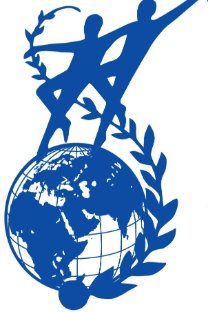BİLİŞSEL VE SANATSAL YETENEKLER ARASINDAKİ NEGATİF KORELASYON TESPİTİ
Yaratıcılık, Biliş, Bilişsel Yetenek, Sanatsal Yetenek, Sanat Eğitimi
DETECTING NEGATIVE CORRELATION BETWEEN COGNITIVE AND ARTISTIC ABILITIES
Creativity, Cognition, Cognitive Ability, Artistic Ability, Art Education,
___
- Arslantaş, C.C. (2001). Girişimcilikte yaratıcılık ve yenilik. İstanbul üniversitesi İşletme Fakültesi İşletme İktisadı Enstitüsü Yönetim Dergisi, Yıl 12 S. 38, 17-23.
- Çoban, S. (1999). Yöneticilerin yaratıcılık düzeyleri ile liderlik tarzları arasındaki ilişki. İstanbul: İstanbul Üniversitesi Sosyal Bilimler Enstitüsü Yayınlanmamış Doktora Tezi.
- Erden, M. - Akman, Y. (1997). Eğitim psikolojisi. Ankara: Arkadaş.
- Güngör, S. - Tomris Küçün, N. - Sezgin, M. (2018). Girişimci öğretim elemanlarının psikolojik sermaye ve bireysel yaratıcılıklarının incelenmesi. Sosyal Bilimler Metinleri, Cilt 2018, S. 2.
- Kratzer, J. - Leenders, R. Th. A. J. - Engelen, J. M. L. V. (2004). Stimulating the potential: Creative performance and communication in innovation teams. Creativity and Innovation Management, 13(1), 63-71.
- Lubart, T. - Guignard, J. H. (2004). The generality-specificity of creativity: A multivariate approach. Creativity: From Potential to Realization. (eds. Sternberg, R.J. - Grigorenko, E.G. - Singer, J. L.), pp. 43-56, Washington DC: American Psychological Association.
- May, R. (2008). Yaratma cesareti. (Çev.: Alper Oysal), İstanbul: Metis.
- Prentice, R. - Matthews, J. - Taylor, H. (2003). Creative development: learning and the arts. Learning in the Early Years a Guide for Teachers of Children 3-7. (ed. Riley, J.), pp.195-191, London: Paul Chapman Publishing,
- Russ, S.W. (1996). Development of creative processes in children. New Drections for Child Development. n.72. Jonsey-Press Publishers, pp. 31-42, Cleveland, Ohio.
- Samen, S. (2008). İşletmelerde yaratıcılığın önemi. Çukurova Üniversitesi Sosyal Bilimler Enstitüsü Dergisi, 17(2), 363-378
- Sternberg, R. J. - Lubart, T. I. (1996). Investing in creativity. American Psychologist, 51(7), 677-688.
- Taha, V. A. - Tej, J. - Sirkova, M. (2015). Creative management techniques and methods as a partof the management education: Analytical study on students’ perceptions. Social and Behavioral Sciences, 197, 1918-1925.
- Tegano, D.W. - Moran, J. D. III - Sawyers, J. K. (1991). Creativity in early childhood classrooms. National Education Association, pp. 8-9, 21, Washington, DC.
- Altekin, S. (2012). Yaratıcılık potansiyelini bir beceriye dönüştürmek mümkün. http://www.Serapaltekin.com/Yaraticilik.php
- ISSN: 1308-4445
- Yayın Aralığı: 4
- Başlangıç: 2008
- Yayıncı: Motif Halk Oyunları Eğitim ve Öğretim Vakfı
MASALLARIN PERDE ARKASI: TRANSMEDYA BAĞLAMINDA “THE WOLF AMONG US” İSİMLİ VİDEO OYUNU
DİJİTAL ETNOGRAFİ PERSPEKTİFİNDEN TİKTOK’TA MÜZİĞİN KULLANIMI VE PERFORMANS PRATİKLERİ
BAYDILDA SARNOGOEV'İN ŞİİRLERİNDE DESTAN UNSURLARI
KUZEY MAKEDONYA CUMHURİYETİ’NİN GOSTİVAR ŞEHRİ’NDE YAŞAYAN TÜRKLERİN İCRA ETTİKLERİ DÜĞÜN TÜRKÜLERİ
MASALLARDA BİTİŞ FORMELLERİ: İDİL URAL (TATAR) MASALLARI ÖRNEĞİ
Zinnur GEREK, Hasan AÇILMIŞ, Deniz BEDİR
SAUSSURE’ÜN SES VE ANLAM İLİŞKİSİNE DAİR FİKİRLERİ ÜZERİNE BİR DEĞERLENDİRME
BİLİŞSEL VE SANATSAL YETENEKLER ARASINDAKİ NEGATİF KORELASYON TESPİTİ
